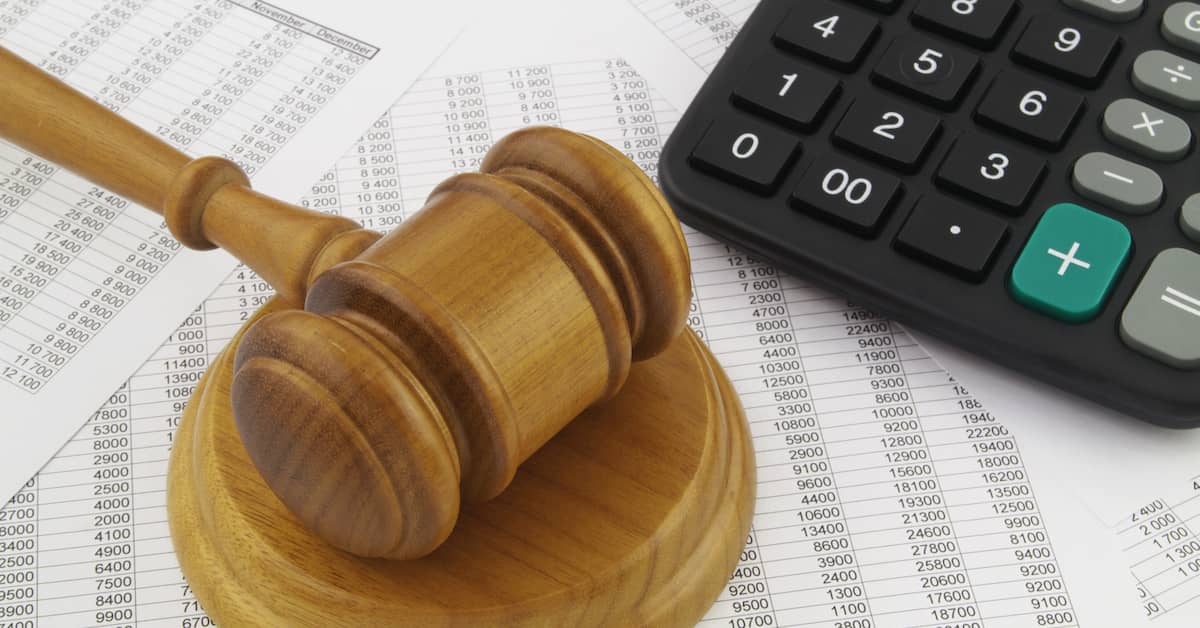An Unbiased View of Securities Fraud Class Actions
An Unbiased View of Securities Fraud Class Actions
Blog Article
Some Known Questions About Securities Fraud Class Actions.
Table of ContentsThe smart Trick of Securities Fraud Class Actions That Nobody is Talking AboutThe smart Trick of Securities Fraud Class Actions That Nobody is DiscussingSecurities Fraud Class Actions - QuestionsSecurities Fraud Class Actions Can Be Fun For AnyoneWhat Does Securities Fraud Class Actions Do?An Unbiased View of Securities Fraud Class Actions
Lots of safety and securities course actions will certainly have at the very least one derivative match as a "tag-along" suit. In 1998, Congress passed the Stocks Litigation Attire Criteria Act (SLUSA) in an effort to close a technicality in the Private Securities Lawsuits and Regulatory Enforcement Reform Act of 1995 (PSLRA) that allowed complainants' lawyers to submit nationwide safety and securities course actions in state courts.Nevertheless, SLUSA does not pre-empt shareholder derivative activities. (This exemption is generally referred to as the "Delaware carve-out"). Therefore, there has actually been an increase in the filing of state tag-along acquired matches in safety and securities situations. The acquired activity will commonly be pursued by a different plaintiff's advice, and is usually not subject to the automatic discovery remain stipulations of the PSLRA.
Our litigators are experienced in assaulting "need futility" accusations made versus a board. We have actually achieved success in getting keeps of the match or exploration, recognize when to and when not to develop an unique lawsuits board, and exactly how to prevent having the tail wag the pet dog relative to acquired claims and safeties course actions.
Securities Fraud Class Actions Fundamentals Explained
A specific financier who rely upon the chief executive officer's initial declaration to buy stock can take legal action against the corporation prior to Fundamental; what Standard enabled is for suits including class activities to continue even if the suing capitalists did not know concerning or straight rely upon the declaration (Securities Fraud Class Actions). The Court appears to have actually believed facilitating class actions in this method would certainly progress the twin functions of anti-securities-fraud legislations: sufferer compensation and scams prevention
A vital demand of the presumption is that a claimed fallacy has to have really had some influence on the cost of the safety and security traded by the plaintiffs; or else, the plaintiff can not be stated to have depended on the fraud, even indirectly. According to Standard, an accused can rebut the assumption by showing that there was no such cost influence, consequently "cut [ing] the link" in between fraud and cost.
In between 2002 and 2004, nearly fifty percent of all pending class actions in federal courts were protections related. One more surge is currently underway. Given that 2012, securities-fraud suits have gradually raised each year; most just recently, there was a 7. 5% year-over-year boost in 2016 and an extra 15. 1% enter 2017.
Examine This Report on Securities Fraud Class Actions
The PSLRA increased pleading criteria and included numerous various other reforms; notably, the initial draft of the Act would have eliminated the Standard anticipation altogether. While the PSLRA did decrease unimportant suits to some level, the continuing rise in securities-fraud class activities recommends that extreme lawsuits remains a significant problem.

Halliburton II: The Supreme Court's Reaction to the Rise Halliburton II marked the second time that the long-running course action against Halliburton Co. for supposed protections fraud after that in its thirteenth year had actually been prior to the High court. In 2011, the events had actually clashed over whether complainants need to show loss causation before or after course qualification.
Some Known Details About Securities Fraud Class Actions

He believed a contrary judgment would certainly be unusual since the similar proof that accuseds would certainly present to reveal that there was no cost effect was currently acceptable prior to class accreditation in order to counter a part of the Basic presumption. If the evidence failed to counter that component of the assumption yet did verify that there had actually been no cost effect, a district court would need to blind itself to this reality and accredit the class under the fraud-on-the-market theory, although the concept was clearly not relevant.
In addressing the two concerns provided, Chief Justice Roberts took care to avoid entering the spirited plan discussion over 10b-5 course actions. Halliburton did try to increase policy concerns for instance, that securities-fraud class actions might "enable plaintiffs to obtain big settlements. for meritless cases." The Principal Justice said that these kinds of issues were "extra suitably dealt with to Congress," pointing out that Congress had actually verified itself willing to react to "perceived abuses" of 10b-5 course actions by see establishing the PSLRA.
Some Ideas on Securities Fraud Class Actions You Need To Know
He would have overthrown the Fundamental anticipation, which in his view has resulted in "an unrecognizably broad cause of activity all set created course qualification" that is irregular with both the financial literary works and the Court's succeeding class-certification caselaw. Questioning that a possibility for pre-certification counterclaim would accomplish a lot, Justice Thomas competed that as a functional matter defense had thus far confirmed virtually difficult and would continue to be so also if enabled before course qualification.
Commentators and common feeling alike recommended that by paying for defendants a possibility to beat meritless claims prior to a course was certified (and prior to the pressures to settle came to be frustrating), Halliburton II would certainly enable those meritless claims to in fact be beat at a meaningful price. This Component suggests that Halliburton II's promise was an illusion and can have been determined as such on the day that the choice was provided, for one straightforward reason: the price-maintenance concept.
Theoretically, the rate impact to be rebutted can appear in 2 methods. The initial so-called "front-end" cost influence is apparent: a misstatement can cause a change in market assumptions about a protection and set off an instant swing in its rate. Assume the market expects a business to gain earnings of $100, the company really does make $100, yet the CEO lies and reports revenues of $125.
6 Simple Techniques For Securities Fraud Class Actions
Given that the marketplace's assumptions were fulfilled, the rate of the firm's supply must stay steady at the pre-misrepresentation baseline. Nonetheless, the price-maintenance theory holds that there is rate influence, since the misrepresentation avoided the market price from dropping as it visit this site would have if the CEO had actually levelled. Here, as well, inflation will certainly dissipate when a corrective disclosure leads the marketplace to integrate the truth right into the market rate.
Rather, defendants need to show that none of the cost activity on the date of a claimed corrective disclosure was associated with the disclosure. This is a tall order. There will usually be some rate movement on that day, because plaintiffs typically More Help file 10b-5 matches following a considerable rate change declaring it was the outcome of a rehabilitative disclosure.
As a result, defendants usually can not convincingly reveal that none of the decline was related to the corrective disclosure, and the price-maintenance theory if valid has actually made it following to impossible for accuseds to rebut the anticipation, also in meritless instances (Securities Fraud Class Actions). B. Plaintiffs' Invocation and Courts' Acceptance of the Price-Maintenance Theory There is little concern that the concept is legitimate
Report this page